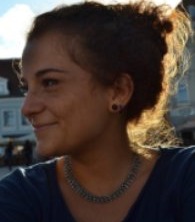The past continuous tense is… well, the older sibling of the present continuous tense, and we probably use both on a daily basis without even realizing it!
Eager to discover more about it? Keep on reading our latest article!
Present Continuous VS Past Continuous
When discussing the past continuous tense, it is mandatory to mention the present continuous tense as well, because these two tenses share the same structure with a few important differences – more about that in a bit.
The present continuous is used to talk about actions in progress and to describe specific events happening in the present or future. For example, right now, you are reading an article on the past continuous tense. You are reading an example of the use of the present continuous to describe an action that is currently in progress.
This tense can be used to describe an action in progress as well, but this action or event took place in the past. For example, in two days, you could say Two days ago I was reading an article on the past continuous tense. I was reading is an example of a short sentence with a verb conjugated in the past continuous tense, describing an action that was in progress in the past.
Structure of the Past Continuous Tense

Once again, it may be useful to start with the structure of the present continuous tense, which is made of just a few building blocks:
Subject + Verb to be conjugated in the present tense + -ing form of the main verb.
Another example of a sentence in the present continuous tense could be You are learning a new English tense. As highlighted above, our example is made of subject (you), verb to be conjugated in the present tense (are), and the -ing form of the main verb (learning).
No, we are not confused. We are still aware that this is an article focused on the past continuous tense, and not the present continuous one. You will understand why we decided to introduce the structure of the present continuous in a minute.
What could possibly be the most logical thing you could do to move from the present continuous to the past continuous tense?
I’m pretty sure you’ve already figured it out. You simply need to conjugate the verb to be in the past tense: the rest remains unchanged! So, in other words, the structure of the past continuous tense is the following:
Subject + Verb to be conjugated in the past tense + -ing form of the main verb
Example: We were doing our homework yesterday at 5pm.
That’s the only difference we have between the present continuous and the past continuous tenses! Not too difficult, right? All you need to know is the conjugation of the verb to be in the past tense:
I was
You were
He/She/It was
We were
You were
They were
Negative Form and Questions using the Past Continuous Tense
Once again, if you remember how to build negative sentences and questions with the present continuous tense, you already know what needs to be done when using the past continuous tense ;)
What is the negative form of I am working for example?
Well, you just need to add a simple not between the auxiliary verb and the main verb in the -ing form, as in I am not working. The exact same thing needs to be done when you want to use the past continuous tense in the negative form.
Examples:
- He was playing computer games at night → He was NOT playing computer games at night.
- They were studying English → They were NOT studying English.
In an informal context, we can also choose to use the contracted forms.
Examples:
- I was not cooking dinner for my siblings = I wasn’t cooking dinner for my siblings.
- Our colleagues were not writing emails this afternoon = Our colleagues weren’t writing emails this afternoon.
As per questions, what do you normally do when building a question with the verb to be in the present or past tense?
You reverse the verb and subject. For example, She is French becomes Is she French? Or They were happy becomes Were they happy?
When using the past continuous in a sentence, you will do exactly the same and reverse the auxiliary verb and subject of your sentence.

Examples:
- You were arguing with your wife over the dishes → Were you arguing with your wife over the dishes?
- Valentina and Pietro were having dinner at home → Were Valentina and Pietro having dinner at home?
When do we use the past continuous tense?
Now that you know the difference between the present and past continuous tense, and how to build the latter, let’s take a step forward.
We have already said that this new tense is used for actions that were in progress at a certain moment in the past, but we can definitely be more specific.
There are two main uses of the past continuous tense:
1) To describe something that happened before or after another action or event.

For example, Maria was coming back home when she got a flat tire.
Besides feeling sorry for her, we can notice that we are discussing two actions, not just one: The action of Maria coming home, and the fact that she got a flat tire.
In this case, Maria was already driving when one of her tires went flat, meaning that the past continuous tense was used when talking about the action preceding the flat tire, but both occurred in the past.
2) To describe habits in the past.
For example, They were attending their Italian classes every Friday morning.
In this instance, we are referring to a recurrent action that took place in the past, as studying Italian once a week was part of a weekly routine.
Now you are ready to start using your tense in your everyday life! If you want to keep on exploring it, we highly recommend listening to this beat! A huge plus: You will also solve a mysterious, hideous crime.

This article was written by Break Into English’s online teacher and blog contributor Claudia Di Domenico.

